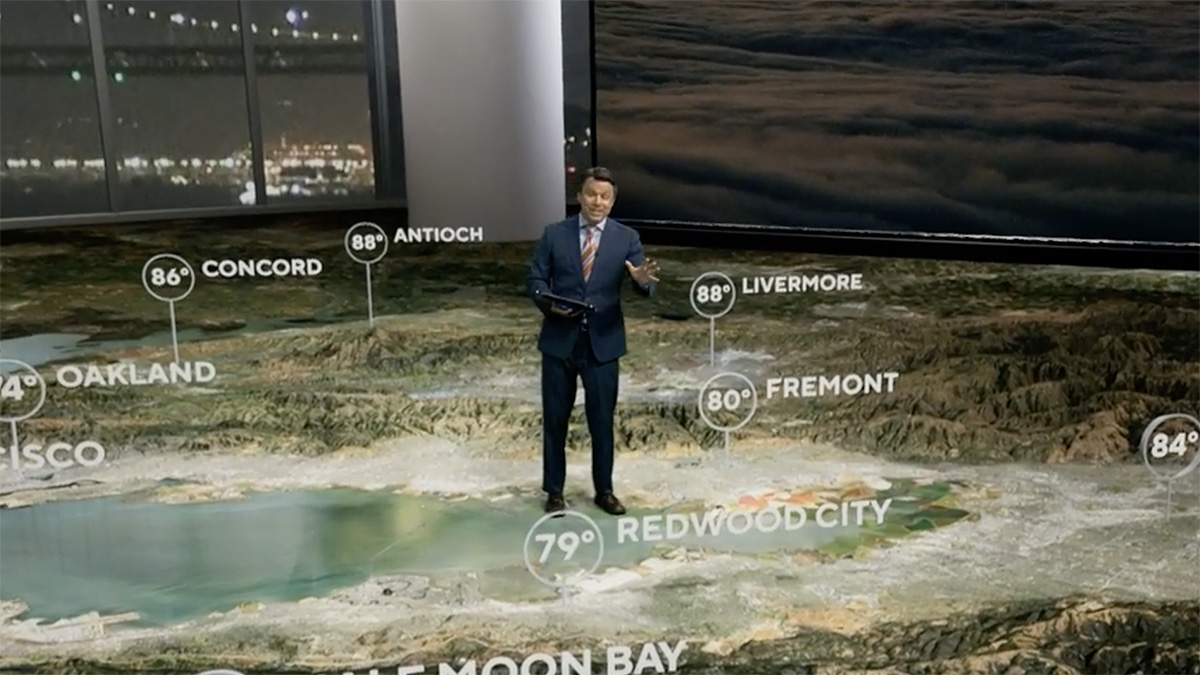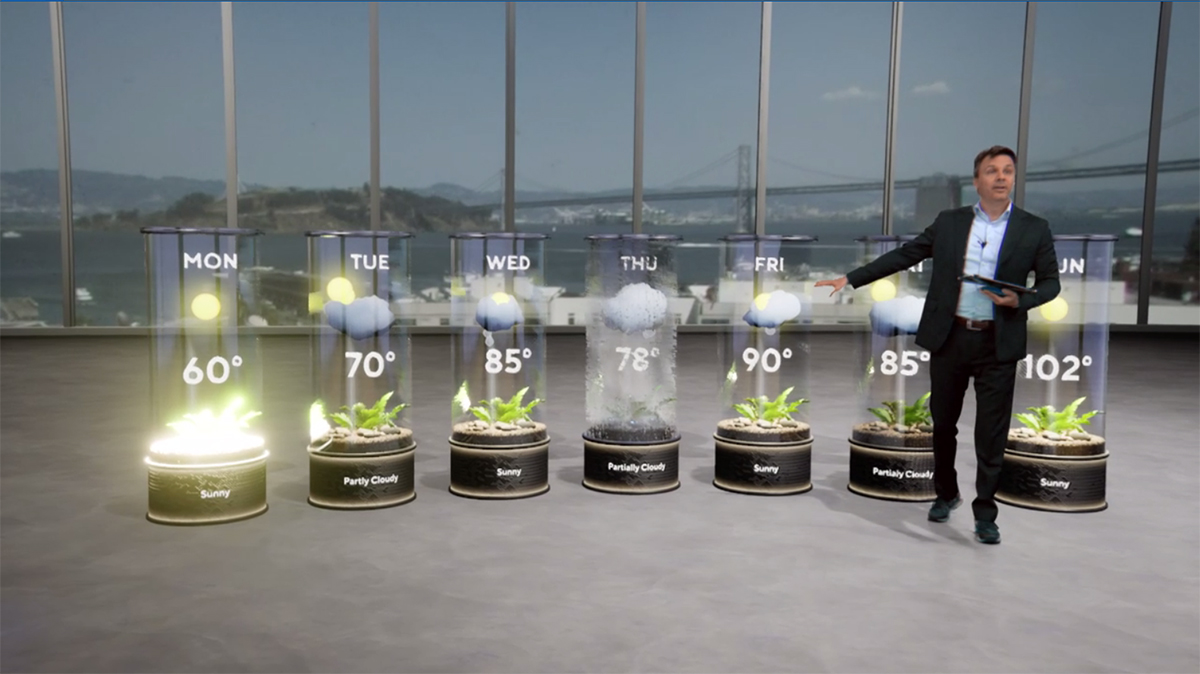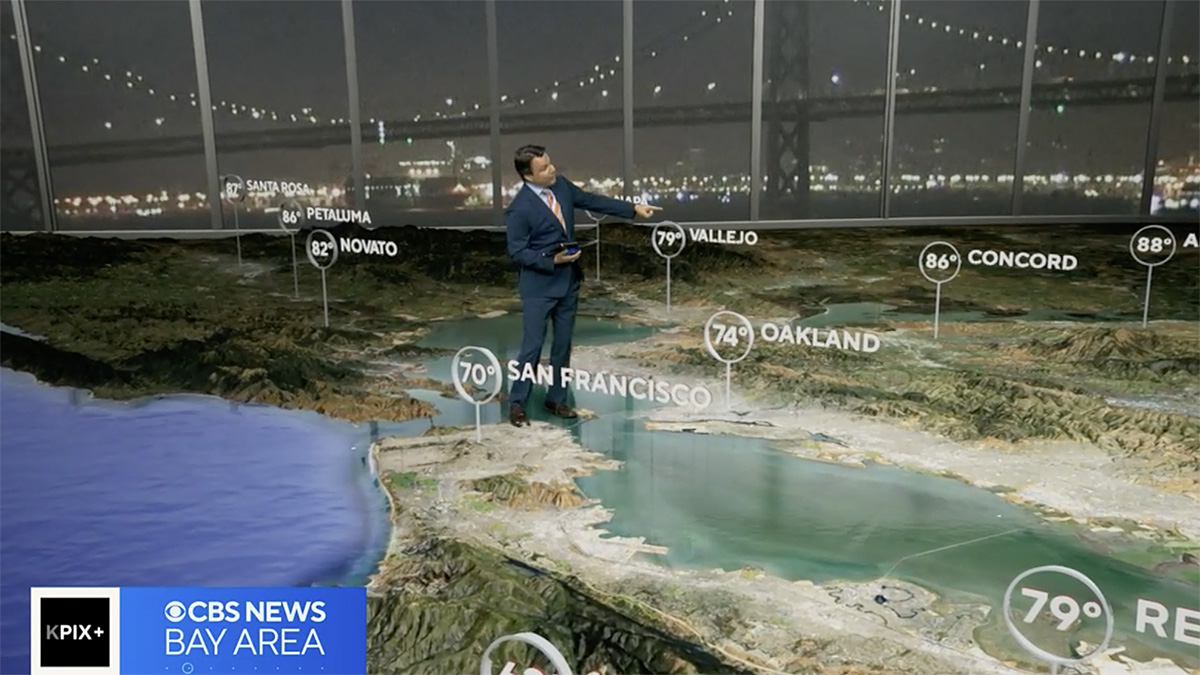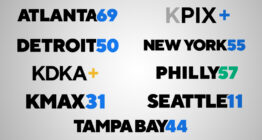KPIX+ brings virtual to primetime with new newscast, production workflow

Subscribe to NewscastStudio for the latest news, project case studies and product announcements in broadcast technology, creative design and engineering delivered to your inbox.
First on NewscastStudio: With the relaunch of KPYX (formerly KBCW) as an independent station, valuable hours of primetime real estate opened up on the schedule. For some stations, this would become a place to run more syndicated fare, but for KPYX, it offered an opportunity to experiment with a fresh take on local news programming.
The station is part of the CBS-owned duopoly in San Francisco including KPIX, which brands on-air as CBS Bay Area.
KPYX, which has adopted the KPIX+ branding on-air, ended its relationship with The CW on August 31, 2023, as part of an affiliation change impacting eight stations owned by CBS.
With the move, each station has carved out different approaches to fill their schedule with KPYX adding “Primetime Edition,” hosted by Devin Fehely.
The station’s renewed mission is focused on the San Francisco community with additional local news, event coverage and specials – led by “Primetime Edition.”
“It’s got to look and feel like a primetime show, and we think we’ve come up with some ideas that will make it work,” said Scott Warren, president and general manager of KPIX and KPIX+.
“The center of everything we do starts and ends with storytelling… If we have really great stories, really compelling stories that pull at your emotions and you learn something along the way, that’s the heart of what we’re doing, day in and day out,” said Warren. “Now we’ll add better ways to showcase those stories and different ways to tell those stories that will help convey more information, more emotion and actually immerse the viewer in the story itself.”
To realize this vision and prepare for the next generation of newscasts, the station has embraced virtual and augmented reality technology under Warren’s leadership, with support from the CBS News and Stations leadership team.
“The appetite for storytelling in different ways and reaching an audience in a different way goes all the way up to the top of this company, and without that support, this would never have happened,” said Warren.
“We often talk about KPIX as being the innovation leader, the incubation team for the group,” noted Jennifer Mitchell, president, CBS Television Stations.
KPIX was the first station to debut the new CBS Television Stations group graphics package, with the station’s team developing and troubleshooting the design integration with Chyron Prime.
Weather as the driver of innovation
“We think the most valuable place to start with this is weather. We’ve had two-dimensional maps on the wall that somebody’s pointed to for 60 years. The maps have gotten a little better but we’ve been doing the same presentation for 60 years,” said Warren. “Weather’s three-dimensional and weather’s immersive… That was the start of all of this, how immersive can we get in this?”


While “Primetime Edition” may initially focus the technology on weather, the goal is to move behind the anchor desk for as much of the newscast as possible.
“We’re starting with the basics and then we’re going to continue to grow and add on. Weather is our starting point. After that, we think of it less as sets and more as storytelling environments where now your lead story is in the middle of a wildfire and we have a 360 camera up out in the woods… The ways that we can bring people to a story and into a story and immerse them in a story, and make them feel like they’re part of the story, that’s where we’re headed with this.”
While the presentation may start with familiarity, building from maps and charts, Warren envisions more interaction with data such as clouds and storms surrounding the weathercaster, as he breaks down hyperlocal conditions.
“We will slowly start adding the storytelling environments and eliminating the time we spend on our hard set, to the point where you won’t see it very much more,” added Warren.
A new workflow for virtual production
Behind the scenes, the team including Jeff Jeandheur and Eliot Curtis have been working on the task of making virtual production more efficient for usage in local news, given the tight deadlines and typical story workflow.
“We feel that the technology — in all aspects of this — has finally reached a point where we can pull it all together to make it as photorealistic and dynamic as possible,” said Warren, who emphasized this level of production and output quality has not been possible previously at a local station.


This includes tying the virtual production into the station’s control room automation and ensuring a constant flow of real-time data from a variety of sources.
“All the technology has been out there for years, but nobody’s pulled it all together to do this. So we now have an immersive environment with real-time data that all hooks into an automated control room, so you don’t need huge teams of people to run this stuff,” said Warren. “It can be done on a daily basis, a newscast basis, by the team we have… It’s really the brilliance of the team that’s put that all together.”
Technology-wise, the virtual environments are powered by Zero Density’s Reality solution with rendering from the Unreal Engine and camera tracking from Stype. Myreze worked with the KPIX team on the initial virtual design, with the station’s team handling implementation and further customization.
While “Primetime Edition” is currently viewed as an experiment, it may eventually lead to new methods of storytelling at KPIX and beyond.
Warren envisions journalists that are not only gathering video and interviews but potentially capturing objects to turn into 3D models for a newscast.
Across the group, Mitchell notes the sharing and learning coming out of San Francisco.
“As we make decisions about building out new sets, about design, we are absolutely thinking about virtual versus a hundred percent hardscape,” said Mitchell. “We can learn from that [KPIX] team and scale when the time is right.”
Subscribe to NewscastStudio for the latest news, project case studies and product announcements in broadcast technology, creative design and engineering delivered to your inbox.









tags
CBS, CBS News, CBS News and Stations, CBS Television Stations, Epic Games Unreal Engine, kpix, KPYX, Myreze, Stype, Unreal Engine, Zero Density
categories
Augmented Reality, Virtual Production and Virtual Sets, Broadcast Industry News, Heroes, Local News, Weather